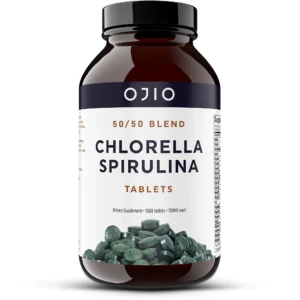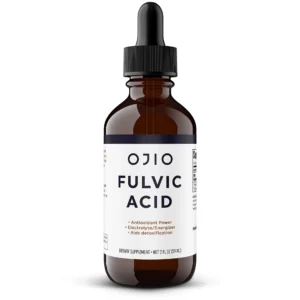Any farmers’ market you enter will welcome you with signs that read “Certified Organic” in large letters. Organic farming has overtaken non-organic farming as the most widely used alternative kind of farming, not just in the United States but also internationally, despite being significantly more expensive. The United States Department of Agriculture (USDA) reports that as of 2012, organic farming accounts for 3% of the nation’s overall food industry sales. Governments in nations like Finland, Austria, and Germany have been hard at work putting plans and laws into place with the goal of allocating 20% of land area to organic farming. Bhutan has lofty goals to become completely organic by 2020. In contrast, Sikkim, a state in northeastern India, succeeded in becoming entirely organic in 2016. The gradual transition to organic farming has mostly been driven by our as consumers’ growing awareness over the dangers of unintentionally ingesting pesticides and chemical fertilizers. The USDA originally codified the definition of “organic” in the 1990s, essentially indicating that farmers grow their produce without using any kind of synthetic fertilizers, pesticides, herbicides, or fungicides.

When it comes to producing food, organic farming is typically seen as a far more sustainable option. A greater range of plants and a lack of pesticides improve soil quality, improve biodiversity, and reduce run-off pollution from fertilizer and pesticides. Due to the extensive use of synthetic fertilizers and pesticides in conventional farming, it has been widely condemned for contributing to biodiversity loss, soil erosion, and increased water pollution. Scientists are worried that organic farming produces much lower yields than conventional farming and hence needs more acreage to meet demand, despite these obvious drawbacks.
A Heated Debate
It should come as no surprise that the argument between conventional and organic farming is highly divisive in intellectual circles. The topic of organic farming has recently changed from its lack of pesticides to its effect on greenhouse gas emissions. In a study published in the journal Nature in December 2018, researchers from Chalmers University of Technology discovered that organic peas cultivated in Sweden have greater climate impact (50 percent more emissions) than peas grown conventionally in the nation. “Organic farming has numerous benefits, but it doesn’t address all of the environmental issues related to food production. The additional area needed to cultivate organic foods is a significant drawback, according to associate professor at Chalmers Stefan Wirsenius. “Less land is available for carbon sequestration if we utilize more of it for food production. Organic farming has a greater overall greenhouse gas impact than conventional farming. Several researchers disputed the study shortly after it was published and extensively covered by numerous news sources worldwide. In a blog post, the Rodale Institute’s chief scientist Andrew Smith blasted the practice, calling it “irresponsible to infer a global phenomena based on two crops cultivated in one country over three years.”
In addition, Smith said that more information should be gathered and examined before drawing any conclusions. Wirsenius commented on this by stating, “It is true that we did a short comparison between organic and conventional farming using Swedish statistics. This is due to the fact that Sweden is one of the very few nations with statistics that include crop yields from both conventional and organic sources. Due to the growing world population, it is predicted that by 2050, there will be a 59 to 98 percent rise in food demand. Not just trying to figure out how to feed a growing population, but also doing so while adapting to climate change and coming up with suitable mitigation measures, is a huge issue for the agriculture industry.
Some scientists are still worried that being 100% organic in developed nations could not be feasible given the restricted amount of land that will be available for farming. According to a recent study published in the journal Nature Communications, adopting organic agricultural methods widely in England and Wales would result in higher greenhouse gas emissions. This is primarily due to a 40% decrease in agricultural yields. The researchers made the case that these two nations would need to import more food as fewer crops could be grown there. But, if farmers in England and Wales embraced this alternative style of farming on a smaller scale and did not only rely on organic farming, it may lead to a 20% decrease in carbon emissions. “For organic farming to be successful, agribusinesses would have to find the balance between the costs involved and also, its carbon footprint, while taking into account the overall need to meet the high demand for food,” said Alexander Ruane, a research physical scientist at NASA Goddard Institute for Space Studies and an adjunct associate research scientist at the Columbia University Center for Climate Systems Research. “That’s difficult since, in industrialized nations, organic farming now aims to satisfy the demands of those who can afford the luxury of purchasing the highest-quality food. Conflicts may arise if the demands of this luxury conflict with the necessity to feed the entire population.
The Blurry Line
Several experts warn that the word “organic food” is not often properly regulated, which only serves to muddle issues further. According to academics, the mainstreaming of organic markets has “led to the undermining of ecologically beneficial norms” as more huge firms get involved. Also, it might make organic farming less effective at cutting greenhouse gas emissions.
According to Sonali McDermid, an assistant professor in the department of environmental studies at New York University, it is very difficult to generalize across any farming systems or label conventional or organic farming as “good” or “bad.” This is despite the fact that researchers and the general public continue to disagree on whether organic farming is more sustainable than conventional farming. Depending on where you are, “they have quite varied manifestations,” she added.
An appropriate illustration would be the instance of a farm producing organic berries in California’s Central Valley. Although they do not use more land or chemical inputs than in normal farming, they do use other extremely potent inputs, such as sulfur, according to McDermid. “Even if it is not chemically manufactured, farmworkers should nevertheless wear appropriate clothing and other equipment. It still has some of the same potency despite that. McDermid is also troubled by the fact that some agribusinesses can practice standard farming practices devoid of any biodiversity and still claim to be organic. Farmers in emerging or developing nations, such as India, on the other hand, typically adhere to a much more traditional understanding of organic farming. Organic farms in India produce a wide variety of crops simultaneously. Instead of using strong inputs like sulfur, they develop plants that can naturally repel pests. Instead, the farmers control their farming systems with the help of flora and biodiversity. By planting a field with rotationally grown legumes, Indian producers of organic crops also produce their own fertilizer. The farmers manually push the legumes into the earth once they are completely developed. Instead of utilizing simply manure or, even worse, synthetic fertilizers, more nitrogen is poured into the soil as a result. Because it uses less water and chemical inputs than conventional farming, organic farming can actually increase yields in some regions.
To Be Organic Or Not To Be Organic
Even sustainability specialists in the US are still confused as to whether foods like fruits and vegetables labeled “certified organic” are truly organic or not. Eating organic chicken rather than beef that was raised conventionally is far more environmentally friendly. But, eating a lot of meat that was raised organically will still have a greater negative impact on the environment than eating food that was grown conventionally. Given the high costs associated with switching to a completely organic diet, especially when it comes to purchasing fruits and vegetables, it is advised to do so. Searching for locally farmed organic food may also be beneficial. Organic veggies are grown in several communal gardens and sold at local farmers markets.
Earth Shift Products
The goal of Earth Shift is to be a store that promotes healthy lifestyles. They contend that a healthy lifestyle should be adopted one decision at a time. Health doesn’t have to be “all or nothing”; it might mean making small changes in several aspects of your life that add up to a healthier overall state of being. Kids enjoy discovering novel objects with unusual uses or constructions. They also adore finding handcrafted products that, because of the thought that went into producing them, add a little beauty to life.
Chlorella – Spirulina Tablets

Chlorella OJIO It’s simple to obtain the advantages of both of these robust nutrient sources in one serving by taking spirulina tablets. Chlorella, which has a damaged cell wall, contains a variety of vitamins, minerals, and phytonutrients, including a lot of chlorophyll. The antioxidant phycocyanin included in spirulina helps to ward against damage from free radicals. To preserve purity and nutrition, their spirulina and chlorella are both grown in carefully regulated environments and are tabled without binders.
Fulvic Acid

The component of humus, the extremely nutrient-rich layer of the ground, is fulvic acid. Humus and peat are constituted primarily of partially degraded material. This layer of rich nutrients provides food for plants, ensuring their growth and strength. Millions of helpful bacteria working on the decomposing plant tissue produce this remarkable chemical in incredibly little levels. A thick, tar-like substance that emerges from the rocks of high mountain ranges like the Himalayas is called fulvic acid shilajit and is made of the same substance as fulvic acid. Similar to how it functions in soil, this substance acts as a vital carrier of vitamins and nutrients to the appropriate locations within our bodies.
Conclusion
Organic supplements are produced using techniques like freeze-drying or extraction in a liquid form to preserve the complete range of nutrients. They also originate from real, whole foods and natural substances. Many studies show that foods grown organically have higher levels of nutrients and antioxidants than crops grown conventionally. It makes sense that organic supplements would be more nutrient-dense given that they are created from organic sources. Every day, the foods we consume, the air we breathe, and the things we use expose us to dangerous poisons. Any action we can take, no matter how minor, to reduce toxic overload could lengthen life by lowering the risk of cancer and endocrine-related illnesses. Organic farmers place a strong emphasis on ecologically sound farming practices. Also, they utilize half as much energy as traditional farms. By choosing organic vitamins, you lessen your carbon footprint and protect the environment for future generations. An excellent method to support a healthy lifestyle is with organic supplements. Instead of merely the separated nutrients found in synthetic supplements, they offer the nutritious benefits of the whole food. Also, they don’t contain any hazardous substances that might accumulate in your body over time and cause sickness. Becoming organic is a wise decision for the environment and for you.




